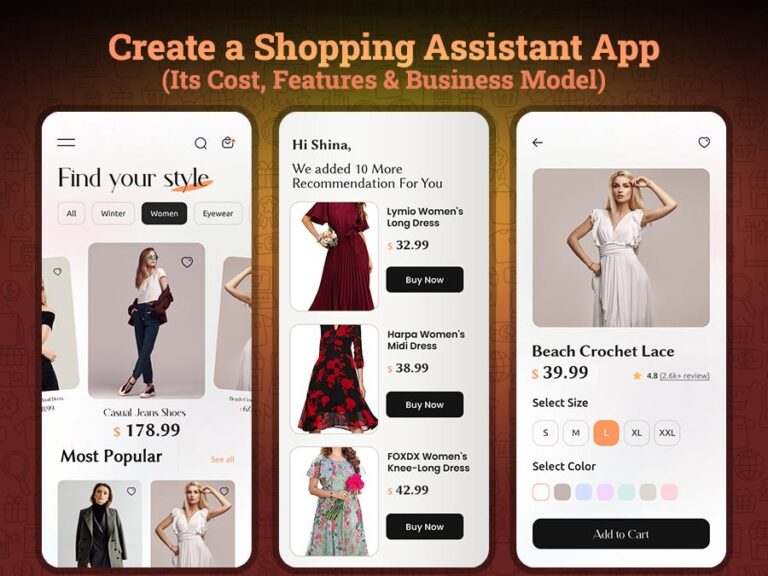Unlocking the Future of Shopping: Meet the AI Shopping Assistant
Artificial Intelligence, or AI, has been a major topic recently, with projects such as ChatGPT showing what this technology can do. However, AI-based systems have been in use for much longer than the latest content generation systems, with chatbot AI shopping assistants being the pioneers of adaptive and learning technology. Without even realizing it, you may have interacted with AI-driven software for years, whether as a virtual shopping assistant or chatbot.
But why is an AI shopping assistant useful, and what can it do for your business?
Types of AI Shopping Assistants in use today
Just as there are dozens of tools to help you manage inventory or shipping for an eCommerce site, there are a wide range of virtual shopping assistant solutions you can integrate too. While they all use AI technology, they can often have very different approaches and can even be designed to tackle a variety of business and customer challenges. The main applications can be broken down into two main approaches:
Chatbots
Chatbots are machine learning or AI-driven tools that can understand and respond to human language. In the context of an eCommerce site, this would usually be seen as a pop-up text box, like a messenger tool, that invites you to ask questions about products or the shopping experience.
The first chatbots appeared as customer service tools, able to answer queries about order progress or other smaller issues. They quickly became popular, allowing sites to offer 24/7 customer support without the expense of running a team of customer service professionals around the clock.

As technology has matured, with a better understanding of customer queries and more natural-sounding responses, chatbots have expanded their capabilities. Chatbots today are used in many eCommerce applications; for instance, a restaurant may use one to allow customers to book tables in advance, make menu recommendations for different dietary needs or purchase food for takeaway.
A chatbot shopping assistant can also provide stock information or answer questions about a specific product range. Simple to use, very effective in providing information that consumers need, chatbots are an incredibly useful addition for any business and provide the 24/7 support now expected cost-effectively.
However, as with everything, there are some downsides to using chatbots, in that they are limited by the data they can access. If a question outside that accessible data is asked, they cannot help. As a result, in context with the kind of AI we see elsewhere, they can seem a little shallow and artificial, whereas the best AI applications allow people to stop thinking about talking to software and just have a conversation.
Virtual Assistant
While Chatbots can answer various customer questions and create a 24/7 support service to help with any problems, a virtual shopping assistant is more focused on helping consumers identify products they want to buy.
In this role, the AI system will ask questions about the type of product required and then navigate you to suitable items on the site. Sometimes, they can even order you to completely streamline the entire shopping process. These tools may look similar to the familiar chatbot popup you find on websites but can also be integrated into mobile shopping apps or as browser plugins to work across multiple sites.

However, they are presented through a virtual shopping assistant that is designed from the ground up to make the user's shopping experience easier, faster, and more convenient. The most common way of achieving this is through product discovery, allowing consumers to see products that they may find useful but were unaware of. Using search history and other data, AI shopping assistants can accurately identify various items that may suit this. Not only can this save time for the consumer, but presenting new products that they may never find any other way creates tangible value within the shopping experience.
They can also be used to remind consumers of abandoned shopping carts to boost recovery statistics, offer personalized discounts or deals, and aid with customer support for things like order tracking too. This type of AI shopping assistant is relatively simple to integrate, offers a superb return on investment, and enhances your customer's shopping experience. Because consumers have shown an appreciation of the technology, it is one of the very few instances where a tool provides a wide range of benefits and no real downsides at all.
The Benefits of AI Shopping Assistants
Technology has helped transform many industries, but businesses often fall into the trap of implementing new technology just because it is new, often receiving just marginal improvements for significant investment. Understanding what benefits you can get from chatbots, AI shopping assistants, and so on is crucial to understand why they should be adopted.
Customer engagement
Whatever market your e-commerce business operates in, whatever products are offered, there is more competition today than ever before. Staying ahead of that competition and differentiating your business enough for consumers to choose your site over any other is the biggest challenge in online retail today.
An AI shopping assistant will boost customer engagement by offering a different, improved shopping experience. From new product recommendations to personal discounts, a virtual shopping assistant provides very real and noticeable improvements for customers, making your brand and site stand out, building loyalty and improving engagement.
Increased Sales
A chatbot shopping assistant will increase sales by ensuring potential customers see the best deals, discover new and desirable products, and, in general, offer a more streamlined, enjoyable shopping experience. That doesn't just apply to initial conversations either; that additional engagement and enjoyable experience means increasing return business too. Your customers will buy more products and return more often. Of that is that it lowers the instances of abandoned carts, too, a problem that all eCommerce sites must deal with. By reducing the rate of cart abandonment,
Multichannel Customer Connections
A virtual shopping assistant can maintain connections with your customers across multiple channels seamlessly, ensuring that you always deliver the best experience for them at any time. This is useful in terms of interactions with individual customers, again building engagement and brand loyalty, and in terms of wider brand awareness.
The more channels your conversation is presented on it increases the opportunities to share, and that helps extend your brand reach, build a new audience, and boost awareness.
Great Value
With increased sales, improved brand awareness, and customer engagement, implementing chatbots, AI shopping assistants, and other tools offers exceptional return on investment. Requiring little maintenance, creating a bespoke AI shopping assistant through a tool like ChatInsight to suit your business is low cost and high reward.
Examples of Virtual Shopping Assistant Deployment
With many technologies, every discussion is about theories or intangible benefits; however, it is a little different with AI shopping assistant applications. Major brands were some of the first to adopt the technology, and as a result, we can clearly see how they work in practice and what the results of having a chatbot shopping assistant or similar actually are. Here are two examples that show why you should think about an AI shopping assistant for your business.
The North Face
A globally recognized brand that sells active clothing for various adventure sports and outdoor activities, The North Face has been using AI in its sales solutions since 2016. Incorporating IBM's Watson AI technology into a mobile app that helps customers find what they need faster, narrowing down a vast range into a small selection suitable for a specific use.
The result has been a decrease in abandoned carts and increased customer engagement, with click-through rates for the product recommendations around 60%.
Burberry
With its distinctive plaid colours and luxury image, Burberry is a unique fashion brand that first deployed an AI shopping assistant in 2015. Burberry utilizes this through an app and integrates features into the in-store and online experiences.
With stock in-store fitted with RFID tags, opening the Burberry shopping app while in one of the stores allows the system to know what items are being looked at and offer recommendations for additional items to go with it and sizing options, and so on.
Burberry claims a 50% increase in repeat custom from those who use the app, and the brand continues to innovate today with new applications of AI systems to create a seamless experience, whether in-store or online.
Build an AI Shopping Assistant with ChatInsght.AI
ChatInsght.AI is a conceptual knowledge-based chatbot designed to provide intelligent and interactive services, harnessing the power of AI to enhance user experiences in various domains. Here's an introduction to its features and capabilities:
Key Features
- AI-Powered: ChatInsght.AI leverages advanced AI algorithms, including natural language processing (NLP) and machine learning, to understand and respond to user queries effectively.
- Knowledge-Based: It has a rich knowledge base that it uses to provide accurate and relevant information. This database is constantly updated to ensure up-to-date and comprehensive content.
- Multi-Domain Knowledge: ChatInsght.AI is versatile and can be employed in various domains like e-commerce, customer service, education, and more.
ChatInsght.AI represents a significant step forward in the field of AI chatbots, offering versatile, efficient, and user-friendly solutions across multiple domains. Its continuous evolution and adaptability make it a valuable asset in the ever-growing landscape of AI technology.
Conclusion
Offering increased brand engagement, sales boost, more repeat business, and fewer abandoned carts, the virtual shopping assistant is an essential addition to any business. Whether a website widget, a fully integrated app for online and in-store experiences, or anything in between, there are options for every budget and need.
All deliver exceptional return on investment and an improved customer experience and will help any business maximize its sales while providing customers with a better way to obtain the products they need.








Leave a Reply.